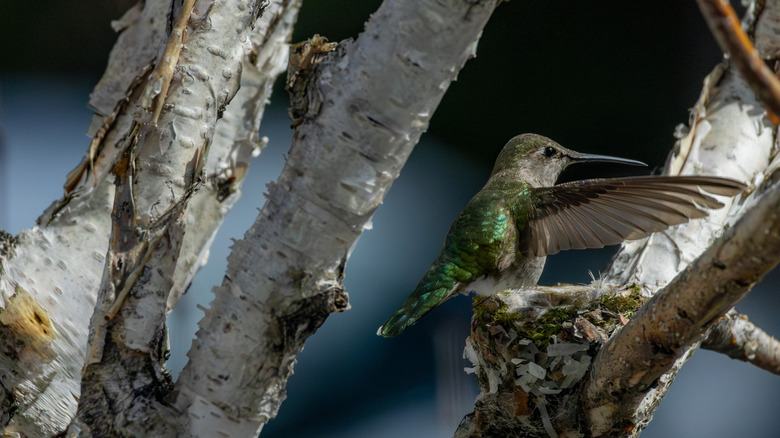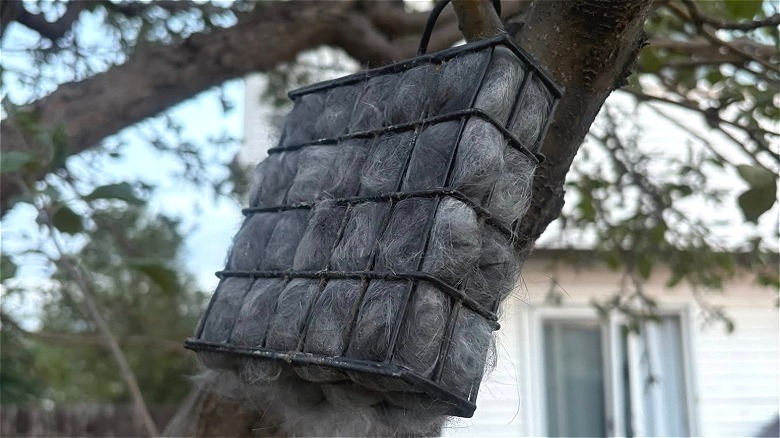If You Have A Dog Or Cat, You Already Have The Perfect Hummingbird Nesting Material
We may receive a commission on purchases made from links.
Just like it is for humans, watching hummingbirds flutter about your yard can be an enriching experience for cats and dogs, but did you know your pets have something to offer the hummingbirds in return? Your pet's shed fur makes an excellent nesting material for the little birds, offering a warm and soft lining to cradle their eggs. If you're hoping to make your yard a hummingbird nest-friendly habitat, you might want to consider tossing some of your pet's loose fur into the backyard the next time you brush your dog or cat.
After migrating up from Central and South America, hummingbirds will usually start building their nests as early as March. Making sure your yard has an assortment of nesting materials is one of the best ways to get more humming birds to nest in your yard. That said, not all dog and cat fur is suitable for a hummingbird nest. If your pet has recently been washed with shampoo, undergoes flea and tick treatments, or has had their fur chemically treated in any way, it is no longer safe for hummingbird use. If the fur is not treated, however, it's fair game.
How to give hummingbirds pet hair for nest building
After brushing your pet to collect excess fur, there are a few ways to provide the cat, dog, or rabbit fur to your local hummingbirds. Piling the fur on the ground with leaves and twigs is one option, but hummingbirds might find it easier to reach when it's hung up high. One option is to put the fur in a suet feeder like this More Birds Suet Cage Bird Feeder. If you don't have a suet feeder and don't want to buy something new, you can also DIY a holding cage with chicken wire, push the fur into crevices on trees, or just drape it over plants in your garden. Again, be sure that the fur you're collecting and placing outdoors is natural and not chemically treated as this can be harmful and even deadly for hummingbirds. You should also avoid human hair or pet fur that's especially long, as this can pose a risk of entanglement.
If you've been leaving nesting materials out for a while but aren't sure if the birds are using them, don't fret. Hummingbird nests are hard to spot, but look out for oddly placed knots on tree branches or a female hummingbird frequenting the same area in your yard. If you're really curious, try setting up outdoor cameras near the fur to see if the humming birds are taking any. Other springtime-nesting birds will likely take from the fur supply too.

